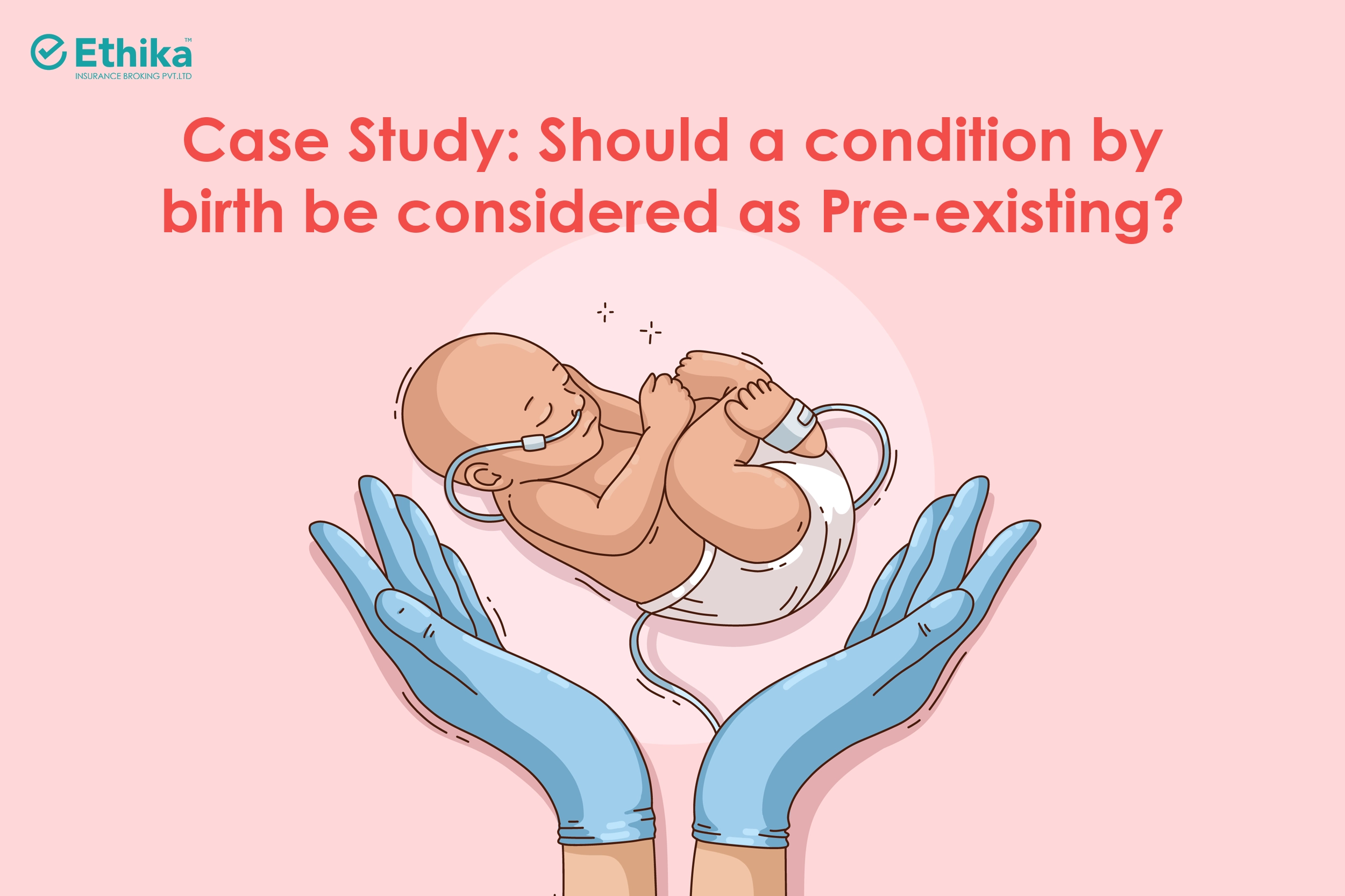
An interesting case of a pre-existing condition has appeared recently in the news. The National Consumer Forum has directed an insurance company to settle the claim immediately. The consumer forum has also directed the insurance company to pay an additional Rs.80,000 for mental agony and Rs.20,000 towards the litigation charges in addition to the Rs.10,68,160/—medical bill incurred by the insured.
This interesting case dates back to 2015 when a child named Amalia Akerkar was admitted to Breach Candy Hospital in Mumbai after suffering from severe dizziness and vomiting and ultimately fell unconscious. Akerkar was admitted to the ICU after being diagnosed with “Embolic Stroke” due to blood vessel blockage and the presence of “Patent Foramen Ovale (PFO),” a congenital condition. A congenital condition is one that develops before birth and could either be internal or external. In this case, it is an internal congenital heart condition that refers to a hole between the left and right atria ( upper chambers of the heart) that exists in every unborn child but would close immediately after birth.
In the case of Amalia, the condition existed even after the birth, which led to hospitalization. Subsequently, the doctors performed a less invasive surgery using a transcatheter closure, for which they were charged Rs.10,68,160/-. When the parents of Amalia approached the insurance company for claim settlement, they were shocked to see their claim getting rejected. The insurance company rejected the claim, stating that the condition was pre-existing.
Aggrieved by this, the parents approached the ombudsman, who supported the insurer by upholding their decision. However, the parents approached the consumer forum, where the ruling was made favorably. The consumer forum referred to the ruling passed by the National Commission stating that “Many people are unaware of the symptoms of the disease they suffer, so they cannot be made to suffer because the insurance company relies on a pre-existing clause in a mala fide manner to repudiate the claims.”
The court also noted that humans might not always be aware of the symptoms of their illness and would realize only after diagnosis. If people were to know everything about the ailment by observing their symptoms, then they should study medicine and not take any insurance policy”.
From this case, we can understand two main things regarding pre-existing conditions—one is that any condition that the insured is unaware of cannot be considered Pre-existing. The other is that internal congenital conditions are covered by regular health insurance plans. To build further on this, let’s understand the definition of pre-existing conditions given by the IRDA.
The Insurance Regulatory and Development Authority of India has defined pre-existing conditions as:-
- “A physician diagnoses any condition, ailment, injury or disease that is/within 48 months before the effective policy start date or reinstatement date.”
OR
- “A condition for which medical advice or treatment was recommended by and or received from a physician within 48 months before the effective policy start date or reinstatement date”.
In the case of Amalia, she was completely unaware of the condition and was not even diagnosed or treated by a physician before getting admitted to the hospital in 2015. Hence, it cannot be considered a pre-existing condition per the definition of IRDA.
What’s on this page?
FAQs:
What is a pre-existing condition?
A pre-existing condition in a condition, ailment, injury, or disease diagnosed or the insured has undergone treatment within 48 months of taking the health insurance policy.
What is the waiting period for pre-existing conditions?
The minimum waiting period for pre-existing conditions is 1 year, and the maximum is 48 months or 4 years. Recently, IRDA reduced the maximum waiting period to 36 months or 3 years.
Is it okay not to declare pre-existing conditions in the health insurance proposal form?
No. It is not okay. You should always declare any pre-existing conditions in your health insurance proposal form to avoid rejecting the claim and canceling the policy.
How is the pre-existing waiting period calculated for reinstated policies?
The pre-existing waiting period for reinstated policies is similar to that for normal policies. It starts when the policy is reinstated.
What are congenital conditions?
Congenital conditions are those that occur at or before birth. There are two types of congenital conditions – internal and external. Internal congenital conditions are covered under a health insurance plan, whereas external congenital conditions are exempted.